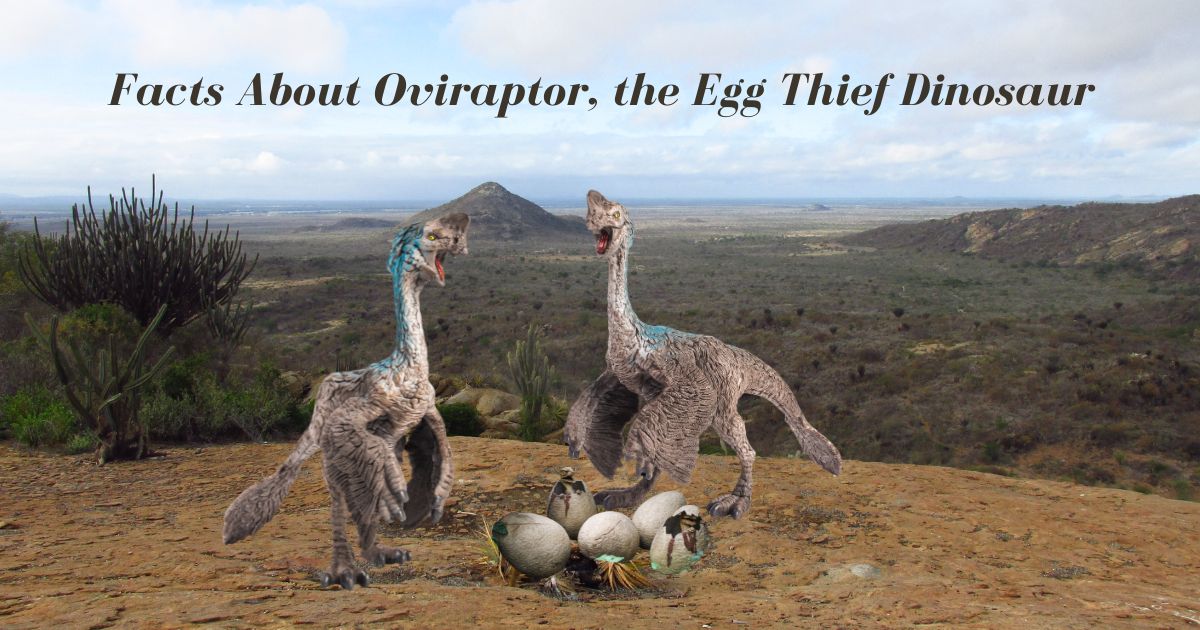Facts About Oviraptor, the Egg Thief Dinosaur

Introduction
Oviraptor, also known as egg-stealing dinosaur, has attracted paleontologists and researchers alike. This ancient animal, whose title understands “egg deception” has been the subject of interest and debate since its discovery in the 1920s. In this article, we explore the secrets surrounding the Oviraptor, its terrain, physical characteristics, undereating, and the myths that have molded our understanding of this amazing dinosaur.
Physical characteristics and habitat
Oviraptor was a small, bird-like dinosaur that lived during the late Cretaceous period, about 75 million years ago. Its fossils have been found mainly in the steppe regions of Mongolia, which show a penchant for bone-dry climates. Oviraptor was about 1.5 meters long and weighed about 33 kilograms, with a distinctive toothless snout and a crest on its head, which varied in size in certain specimens.
Diet and lifestyle
In contrast to its infamous reputation as an egg cheat, the ASS investigation has focused on Oviraptor’s meager diet and lifestyle, painting a more nuanced picture. It is accepted that Oviraptor’s slime down was omnivorous, including plants, small creatures and possibly eggs. Be that as it may, evidence that previously linked Oviraptor to egg theft has been reexamined, suggesting that it was feeding its claimed eggs or perhaps taking them from other dinosaurs. Is.
The Legend of the Egg Thief
The origin of the myth surrounding the truths surrounding Oviraptor, the egg-cheating dinosaur, goes back to its beginnings with the discovery of a fossil, where it was found lying on an egg nest. Early translations concluded that it kicked the bucket while considering trying to get the eggs, passing the title to Oviraptor. Be that as it may, the discovery of comparable fossils in brooding positions has led researchers to rethink this account, suggesting that Oviraptor was likely a caring parent, not an egg thief.
Behavior and reproduction
Facts approximately Oviraptor, the egg-laying dinosaur, additionally includes bits of knowledge on its behavior and distribution. The pose of the Oviraptor fossils shows that, like many modern winged creatures, it burrowed into its nest to regulate the temperature of its eggs. This behavior reveals a complex regeneration technique and parental care, challenging the view of dinosaurs as primitive and aspiring creatures.
Scientific significance
Oviraptor plays an important role in our understanding of dinosaur science and evolution. Its bird-like features reinforce hypotheses of an approximate evolutionary relationship between dinosaurs and birds. The weight of Oviraptor has contributed significantly to our knowledge of the distribution, behavior, and life span of dinosaurs during the Cretaceous period.
FAQs For Facts About Oviraptor, the Egg Thief Dinosaur
Q: Did Oviraptors Really Lay Eggs?
The idea of Oviraptor as an egg hoax has generally been dismissed. More likely, it was thinking about the eggs it claimed, exemplifying parental care or perhaps more than theft.
Q: What did Oviraptor eat?
Oviraptor was likely omnivorous, with a calorie count that apparently included plants, small creatures, and, hypothetically, eggs.
Q: How big was Oviraptor?
Oviraptor was about 1.5 meters long and weighed about 33 kilograms, making it a generally small dinosaur.
Q: Where were Oviraptor fossils found?
Oviraptor fossils have been found primarily in Mongolia in areas that were arid during the late Cretaceous period.
Q: What does Oviraptor mean?
Oviraptor means “Egg Deceiver,” a title that’s inferred from its slimness and attitude toward misjudgment.
Result
The facts about Oviraptor, the egg-cheating dinosaur, reveal a complex remote animal that was drawn from an oversimplified image of an unimportant egg-cheating. The discovery of Oviraptor and its subsequent discoveries have significantly improved our understanding of dinosaur behavior, development, and their environment. By challenging early misconceptions and understanding a more critical view of ancient life, researchers move to reveal the complex web of life that existed during the age of the dinosaurs. Oviraptor stands as a testament to the ever-evolving nature of paleontological research, reminding us of the importance of keeping an open mind in the face of modern evidence. As we delve deeper into the mysteries of the past, animals like Oviraptor guide our journey, shedding light on the many fascinating worlds of the late Cretaceous period.